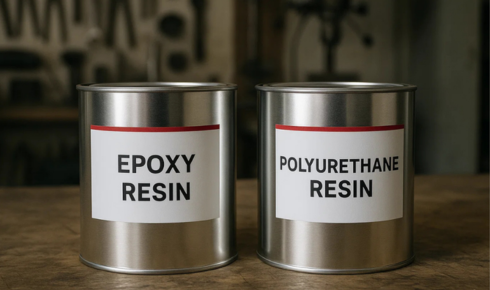Unmanned Aerial Vehicles (UAVs) have become a cornerstone of modern technology, serving purposes ranging from aerial photography and surveillance to delivery and agricultural monitoring. The performance and reliability of UAVs heavily depend on the materials and adhesives used in their construction. Choosing the right adhesive ensures structural integrity, reduces weight, and enhances durability. Among the most commonly used adhesives in UAV manufacturing are epoxy resin and urethane resin, along with various resin equivalents and composite resins.
Epoxy Resin for UAVs
Epoxy resins are widely recognized for their exceptional mechanical strength, chemical resistance, and adhesion properties. These qualities make them ideal for bonding lightweight materials like carbon fiber, fiberglass, and aluminum, which are commonly used in UAV airframes. Epoxy adhesives offer high tensile strength and durability under extreme environmental conditions, including temperature fluctuations, moisture exposure, and UV radiation.
Manufacturers often choose epoxy resin not only for structural bonding but also for coating applications. Protective epoxy coatings can enhance the surface hardness of UAV components and prevent degradation caused by environmental factors. Additionally, epoxy resins exhibit low shrinkage during curing, maintaining dimensional stability—a critical factor for precision UAV components.
Urethane Resin and Its Benefits
Urethane resins are another versatile adhesive solution for UAV construction. Known for their flexibility, impact resistance, and strong adhesion to various substrates, urethane resins are particularly suitable for UAV parts that experience vibration or mechanical stress during flight. Unlike rigid epoxies, urethane adhesives can absorb shock and reduce the risk of cracks or fractures in lightweight composite materials.
Moreover, urethane resins offer excellent chemical resistance and can maintain their properties across a wide temperature range. This makes them suitable for UAVs operating in diverse environments, from hot deserts to cold, high-altitude regions. The combination of flexibility and strength ensures that UAVs built with urethane resins remain reliable over extended operational periods.
Resin Equivalents in UAV Applications
Resin equivalents, often formulated as alternatives to traditional epoxy or urethane resins, provide additional flexibility in UAV design and manufacturing. These adhesives are engineered to offer similar bonding strength, thermal stability, and chemical resistance as conventional resins while sometimes being easier to process or more cost-effective. Resin equivalents can include hybrid formulations or specialized polymers tailored for specific UAV applications.
The use of resin equivalents allows UAV manufacturers to optimize production processes, reduce curing times, and achieve desired performance characteristics without compromising structural integrity. In addition, certain resin equivalents are designed to meet aerospace industry standards, ensuring safety and compliance for commercial and military UAVs.
Composite Resins for Lightweight Strength
Composite resins, often used in conjunction with carbon fiber, fiberglass, or other reinforcement materials, are essential in the fabrication of high-performance UAV structures. These resins bind the composite layers together, creating lightweight yet highly durable components capable of withstanding mechanical stress and environmental exposure.
Composite resins offer the advantage of tailoring mechanical properties according to UAV design requirements. By adjusting the resin type, curing process, and reinforcement material, manufacturers can create airframes with optimized strength-to-weight ratios, enhancing flight efficiency and maneuverability. The combination of epoxy, urethane, and other composite resins ensures UAVs meet demanding performance and safety standards.
Conclusion
The selection of adhesives and resins is a critical factor in UAV manufacturing. From epoxy resin with its exceptional strength and stability to urethane resin’s flexibility and shock absorption, and from resin equivalents to advanced composite resins, each material plays a vital role in the performance and longevity of UAVs. By understanding the unique properties of these adhesives, engineers and manufacturers can design UAVs that are lightweight, durable, and capable of operating in diverse conditions, ultimately advancing the efficiency and reliability of aerial technologies.

